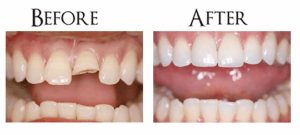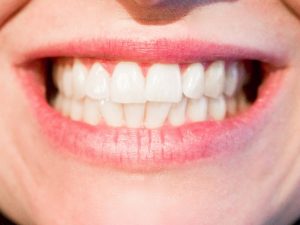Composite bonding, also known as dental bonding, is a relatively modern treatment in cosmetic dentistry for teeth restoration. It is often performed to enhance the aesthetics of your smile and is a preferred treatment for minor imperfections, such as a chipped or discoloured tooth.
Why choose tooth bonding at all?
It is a popular option for closing gaps between teeth, reshaping or resizing teeth, improving tooth colour, and restoring decaying teeth – generally providing a smile makeover.
Dental composite material is applied and moulded to the desired shape and matched to the shade of your teeth for a natural appearance that will delight patients.
This treatment offers cosmetic value and also prolongs the health of your teeth by preventing any further damage to surrounding teeth or your tooth root.
Not only can the treatment be done in one sitting, but it is also more cost-friendly than other dental procedures. Further benefits of this type of cosmetic treatment will be highlighted in this post.
What Does the Treatment Involve?
As with all, if not most, dental procedures, the process begins with a full assessment of the patient’s teeth. This is so the dentist can check out the health of the teeth and the extent of the damaged tooth. After they have done a thorough review of your teeth and you are eligible for treatment, they will discuss the best approach to reach your desired goal.
Step 1: Your dentist selects a shade. A shade guide is used to help choose a resin material that closely matches your natural teeth’ colour.
Step 2: The tooth is prepared. The surface of the tooth, or teeth, is roughened and the bonding liquid is applied. This helps the composite material adhere more easily to the tooth.
Step 3: The composite resin is applied. The teeth resin is applied to the tooth in layers and moulded accordingly.
Step 4: Cure the material. The layers of bonding materials are then hardened with the help of UV light and are shaped and moulded into the required shape to fix the damaged tooth.
Step 5: The tooth is polished. Once the bonding agents and materials are dry and in place, the dentist then carefully polishes the tooth so that it blends in seamlessly with the surrounding teeth. Your dentist will make any final adjustments at this stage to complete your newly formed smile.
The process normally spans a 30-60 minute range per tooth. Composite bonding is also a typically painless procedure so it won’t require any local anaesthesia.
Bonding Vs Veneers
Veneers involve grinding down part of a healthy tooth in order for the mould to be fitted, whereas composite bonding only needs the surface of the tooth to be roughened. For this reason, veneers are permanent and non-reversible, unlike dental bonding. 
Both are durable, long-lasting options for damaged teeth but are offered at different price points, with veneers being the higher-priced option.
Your cosmetic dentist will advise you on the best course of action but if you want a non-invasive, cheaper procedure, dental bonding may be the best option.
Recovery
The outlook of your treatment depends on your dentist’s work, the resin material used but also on your willingness to look after them. Even though these cosmetic treatments are low maintenance, there are still things you can do to ensure optimal results for years to come. Some things to consider are:
1. Brush twice daily with a fluoride toothpaste
2. Avoiding or limiting coffee or any food/beverages that can stain your teeth
3. Avoid smoking as this can stain your teeth
4. Attending regular dental checkups
Over time there will be some wear and tear and if and when this occurs the bonding can be recontoured or replaced.
Advantages of Composite Bonding
1. Conservative treatment
What this means is it involves minimal alteration to your existing teeth. Bonding involves very little preparation of the tooth compared to veneers, for example, and so is a minimally-invasive procedure.
2. Fast and convenient
Other types of dental work require more than one appointment to correct the tooth/teeth. Dental bonding can be completed in a single visit to the dental clinic.
3. Highly affordable
Composite bonding is one of the cheapest options for teeth correction.

4. Reversible
During the treatment, only the surface of the tooth is slightly roughened, to help the bonding agents adhere better. The tooth isn’t filed down and there is no drilling, making this a reversible procedure.
5. Enhanced smile appearance
An obvious benefit is that the treatment essentially upgrades your smile. An improved smile can mean greater confidence for our patients.
Disadvantages of Composite Bonding
Dental bonding is guaranteed to improve your smile at a lower cost than other dental methods but there are some drawbacks as well. They are flawed due to:
Not being as durable as porcelain materials. Although composite resin bonding is stain-resistant to an extent, it isn’t as effective as materials such as porcelain. This might mean it has to be replaced more often and isn’t as long-lasting.
Bonding materials can also chip more easily over time.
Not being suitable for dramatic teeth restoration. Bonding is preferred for minor cosmetic treatments. If you’re looking for a more substantial smile makeover, porcelain veneers may be a better option.
To find out more about composite bonding techniques, get in touch with our friendly team.

